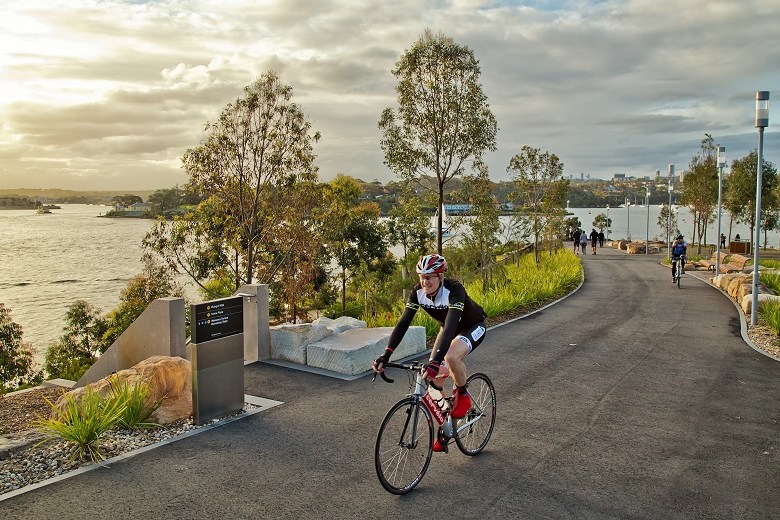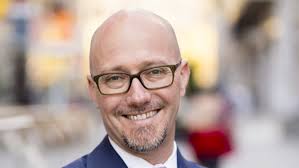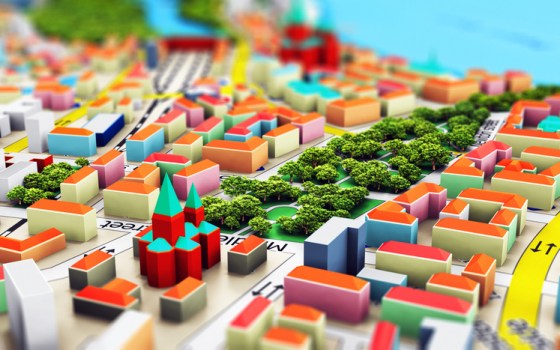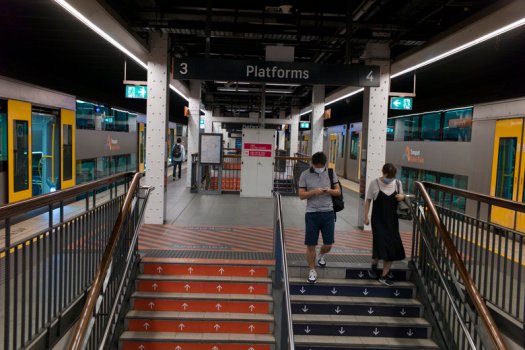
Local government should be handed more power to plan local cycling infrastructure and better neighbourhoods as a consequence of COVID-19, the NSW transport boss says.

Transport secretary Rodd Staples hinted during a webinar last week that the state may be ready to consider loosening the reins on councils, indicating an important shift in the historic relationship between the two tiers of government.
Local government should be given more space to work with the department of planning on local solutions, Mr Staples said during a briefing on transport and COVID-19 hosted by the Committee for Sydney on April 27.
“There’s a lot of opportunity with local government to give them more permission and space to go and do the things they want to do,’ he said.
“Historically Transport has been a bit tough and a bit restrictive so that relationship with local government probably is an opportunity for us to adjust and give them that freedom, recognising that cycling in itself isn’t the only element what you’re trying to do is contribute to better places.”
Experts call for change
His comments came after a group of 100 health professionals, transport experts and academics signed a letter to decision makers calling for better social distancing infrastructure including widened footpaths, increased pedestrian space and more cycling networks as the nation attempts to keep the pandemic under control.

Dr Ben Beck from the School of Public Health and Preventive Medicine at Monash University, who is leading the call, says Australia’s paths and cycleways have proved inadequate to handle the physical activity requirement during the crisis.
“We’ve all experienced the increase in the number of people walking and cycling in our neighbourhoods,” he told Government News.
“These are compatable with physical distancing, but only when the right infrastructure is provided. What we’ve seen is that much of our current walking and cycling infrastructure, like footpaths and shared paths, is inadequate in providing sufficient space to facilitate social distancing.”
He said COVID-19 has also highlighted the disproportionate amount of space given to cars at the cost of people.
“Given the lower volumes of traffic that we’re seeing on our roads its clear that we need to reallocate some of that space to allow people to adhere to physical distancing,” he said.
Dr Beck says cities around the world have acted quickly to support walking and cycling by measures such as expanding shared footpaths, narrowing roads, moving parking inwards and closing lanes, as well as rolling out temporary cycleways, but Australia is lagging.
For example, Paris is turning 650 km of streets over to pedestrians and cyclists, and hundreds of kilometres in Portland and New York are being transformed. Lithuania is providing public space for cafes and bars and NZ and the UK had enacted changes to enable councils to act quickly to provide more walking and cycling infrastructure.
“We haven’t seen the same level of activity in Australia,” Dr Beck says.
“In most cases councils don’t have the authority to take road space without the approval of the state or territory, so we need states to be able to give power to enable the councils to act.
“We need to think in terms of our local neighbourhoods.”
Fast tack bicycle network plan
 The committee for Sydney has also called on the NSW government to bring forward its 40 strategy to upgrade the bicycle network.
The committee for Sydney has also called on the NSW government to bring forward its 40 strategy to upgrade the bicycle network.
The think tank wants to see the strategy accelerated to three years, arguing it’s a cheap major investment that will enable social distancing for people who are reluctant to get back on public transport.
“It’s also medium sized project that can get in the ground fast enough as fiscal stimulus and it was already a really good idea for all of the obvious environmental and health reasons,” CEO Gabrielle Metcalf said during the webinar.
Mr Staples stopped short of committing to a three year fast-track but said it was time to “pause and see whether we can do more”.
“We were already focused on cycling going into this crisis. It’s only sharpened out minds about where the opportunities lie and I’d like to think that in the months ahead we’ll have more of that program being rolled out,” he said.
Comment below to have your say on this story.
If you have a news story or tip-off, get in touch at editorial@governmentnews.com.au.
Sign up to the Government News newsletter
12 thoughts on “Transport boss flags more bike paths after COVID-19”
Leave a comment:
Most read
Scathing report finds little has changed at PwC
Qld council welcomes progress on massive battery system
Inquiry to consider how federal govt can address councils’ sustainability issues
‘Local’ procurement turns out not to be so local, committee hears
Another report finds local government falling down on cyber security


Great, lets hurry this along. World cities have already made many improvements for cycling and pedestrians. Sydney has been so slow to react. For example, incredibly crowded coastal walk Bondi to Bronte in Waverley, for much of its distance is paralleled by empty roads, part of which could have been bollarded off. This could have been a better outcome than total closure of the walk at a time when daily local outdoor exercise is strongly promoted. Similarly the Bay Run around Iron Cove – huge numbers on the footpaths and conflicts between bikes and pedestrians. Conditions could easily have been improved by bollarding off adjacent road space for bikes. Ironically, carpark closures at visitor hotspots such as Clovelly beach have resulted in a wonderful playground for children riding bikes, scooters and anything with wheels, improving their bike handling and avoidance skills. Brilliant.
Fantastic for those areas. Not so useful for the 60km sea of suburbia stretching west. Where people aren’t interested in cycling, or it’s not practical. That’s where the locals become so important for guiding decisions. Electric charging stations, tax free electric cars, light rail for places like Penrith? The Blue Mountains? Transport infrastructure is being duplicated in the east. Meanwhile Penrith gets nothing. Campbelltown gets nothing. Blacktown gets nothing. The Blue Mountains gets inferior trains that don’t fit the tracks. Nothing else.
All attempts to enhance cycling and other forms of active transport are applauded. Time is well past for the acknowledgement that for too long the motor vehicle and fossil fuel industries have held the reins.
Excellent idea, now is the time!
That would be brilliant especially if we can get the bikes off shared pathways.
Very true. I’ve nearly been bowled over by bicycles on footpaths many times. Kids especially. But I don’t want them on the roads. I want them safe.
RMS (still kicking within TfNSW it seems, despite reports of their demise) doing a great job in its latest Ashfield, Haberfield and Leichhardt Project. By sealing off Haberfield they are reducing use of motor vehicles and we should see a big uptake in cycling and walking, as it will be the only way to get anywhere. Now, apply this to rest of Sydney too.
These are exceptionally unusual times and hardly those to push for a massive change due to the current circumstances. Obviously traffic is limited on the roads and with people being forced to stay at home / in their locale that there are limited external exercise opportunities that will obviously ensure conjestion.
I think it is overdue to register bicycles as with accidents and compensation this can ensure appropriate treatment for the injured. Also to pay for what the cyclists want, a users pays system should work.
Hard to compare to Paris, which has a massive population density of around 20,000 per sqkm versus Sydney built urgan area of under 1200… However there are different ways of measuring this, but clearly 5 – 20x denser
The repeated rejigging of roundabouts to suit cyclists has come at a great inconvenience and huge cost in the region which I live.
Why dont we put the money into building more hospitals for an ageing population. Also building them and owning them / running them, not selling the infrastructure off and / or leasing the premises out…….What about more emergency beds if the situation could repeat itself ?
I agree. Particularly as you head west, infrastructure gets worse, health outcomes get worse, hospitals are beyond capacity & few & far between. It’s an hour’s drive between Blue Mountains, Penrith & Campbelltown hospitals, with a projected population of 3 million.
With the limited functionalities, the local government seems to be handicapped. More power to the authorities to plan the transport in a better way!
Planning in the hands of ‘the authorities’ instead of local councils is what has wreaked havoc & lead to poor planning decisions all over the place.
Best example: Penrith. No light rail. No bus lanes. No road improvements. No rail. Tolls slapped & all major access routes – roads that have never been tolled before (in order to pay for all the infrastructure in more wealthy suburbs). A 24/7 airport that they don’t want & will make all our problems much much worse. All the good stuff goes to the privileged. All the garbage they don’t want goes to the west.
Would be wonderful for planning & development approval decisions to be given back to democratically elected local councils instead of buerocrats in ivory towers & vested interests.
Talk of cycling & bike paths are obviously coming from the inner city hipsters & ivory towers, though.
Don’t think I’ve ever seen anyone on a bicycle in Penrith! Not really part of the culture out this way.
Don’t see many in the Blue Mountains either – because they’re MOUNTAINS.
Exactly why, as I said, all decisions should be in the hands of locals.